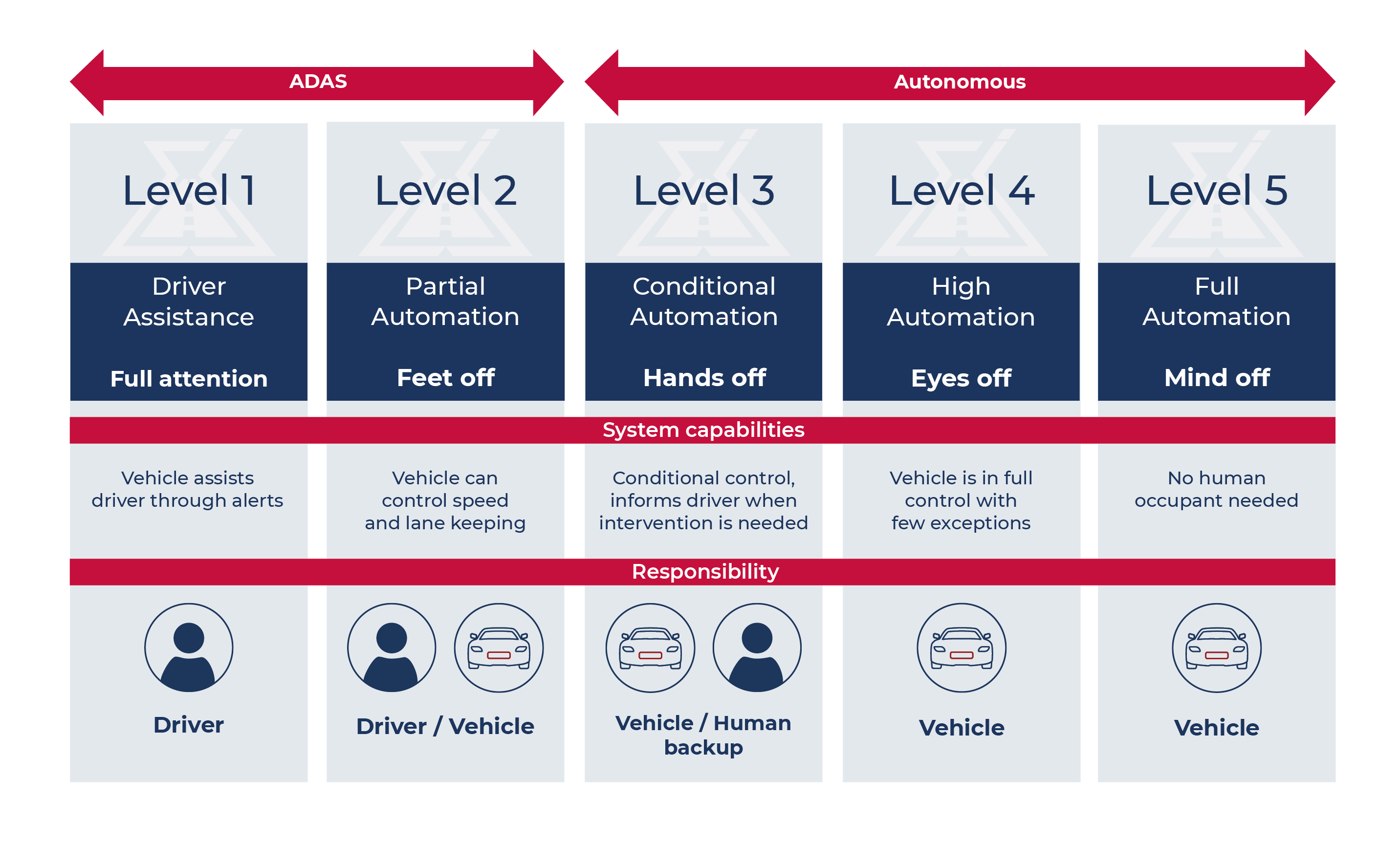
Why now is the time to open the ADAS ‘black box’
contact us

Few critical vehicle functions attract quite as much attention as Advanced Driver Assistance Systems (ADAS), an application which assists the driver in the control of basic levels of automated driving. Just recently, a new US study by the AAA found that rain can impede the performance of these safety systems, including autonomous emergency braking (AEB) that helps slow down a vehicle, and lane-keeping assistance systems that help to keep each car tire within a road’s lane markers. The report calls for more stringent testing of complete ADAS systems, incorporating real-world conditions, in order to certify their safety.
It’s not the first time ADAS, where technology and mechanical parts that work together in vehicles, have been in the headlines. In late 2019, Danish motoring body, FDM, was road testing a Volvo car and discovered an ADAS failure, which led to the Swedish auto manufacturer having to recall and repair 736,430 cars worldwide under warranty. Similarly, a faulty ADAS system also caused Ford Motor Company to issue two safety recalls in North America, including one covering Mustang models from 2020.
What effect might these issues have in our confidence in ADAS and the vehicles that incorporate them? How can OEMs head off the possibility of further issues in future – and why is now the right time for them to put all their energy into developing ADAS specification and design? Read on to find out.
ADAS is a group of electronics that provide autonomous driver assistance support to the driver, for improved safety and comfort. Such systems are already being included in vehicle designs and considered a technology that will grow in importance as we move towards the production of fully autonomous vehicles.
In 2016, the Society of Automotive Engineers (SAE) published its ‘Levels of Driving Automation’ as ADAS moved towards self-driving cars. These range from level 0 (no autonomy), to levels 1 and 2 where ADAS provides ‘driving support’, level 3 which is so-called autonomous driving, with level 5 automated cars.

Levels of driving automation
Today, carmakers are on level 2+, halfway between providing some support and facilitating a level of autonomy. To reach level 3, safety and performance are essential, since ADAS failure in a real-world scenario can be extremely costly, not just in terms of finances required to facilitate recalls, but because the reputational damage done to an OEM could last for years.
If the future population of personal transportation is electrified and autonomous, vehicle differentiation becomes more of a challenge, particularly in the world of mobility-as-a-service where the rules surrounding traditional vehicle ownership will have been completely rewritten. Brand trust, loyalty and customer experience will come to the fore in fleet purchasing decisions. In this environment, no carmaker can afford to be lumbered with a reputation for not having safe ADAS.
Previously ADAS systems have remained something of a ‘black box’ to carmakers – while they recognize the importance of the system, rarely have they become too involved in how it is designed or manufactured. However, with ADAS becoming a critical factor for vehicle differentiation and quite literally the part of a vehicle upon which brand reputations are built, it’s time to open the black box.
To facilitate the creation of ever-more reliable and effective ADAS, collaboration across the value chain is required, with OEMs and Tier 1s working more closely with the supply chain when it comes to specifying hardware materials and electronics. For example, it is possible to aid reliability of ADAS by using unique substrates, which offer greater durability, while saving weight and space. Miniaturization can accelerate innovation and provide further efficiency savings, while more effective use of chemical compounds can overcome typical performance limitations and improve resilience.
Along with power electronics, ADAS continues to be a primary factor in new vehicle design, an area that MacDermid Alpha Electronics Solutions is working in to help the automotive supply chain realize greater reliability in all aspects of ADAS hardware builds. Materials may seem a small factor in ADAS design, but it’s one that can have an enormous impact on reliability, power, safety and differentiation. Only specification of the right materials can create true brand and product differentiation, and this is only made possible by true supply chain and materials integration.
MacDermid Alpha Electronics Solutions is the only chemicals business that has a touchpoint on the entire automotive electronics supply chain, from PCB assembler to Tier 1 to carmaker. We know why some materials for ADAS fail, and through our unique material combinations, can suggest systems-level solutions that deliver high reliability, safety and performance every time – a solid foundation on which to build your reputation.